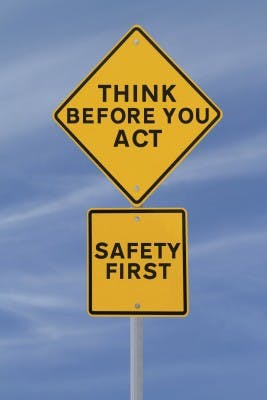Does your company have an employee safety program?
Even in organizations with largely office-based staff, keeping employee safety front-of-mind not only benefits employees and leadership by reducing lost days to illness or injury, but also communicates to employees that the company does, indeed, care about their health and well-being.
Of course, in industries including manufacturing, construction, engineering, energy and the like, environment, health and safety (EHS) is often paramount to company success. In the U.S., regulatory agencies like OSHA can shut down work sites or impose fines that can cost a company future contracts.
The problem with “no safety incidents” awards
In these organizations with a commitment to safety, consulting on the importance of recognition takes on a new level of urgency.
Nearly every company with a strong EHS program also offers some kind of incentive or reward program to encourage desired results. More rare, however, are programs that, first and foremost, reinforce desired behaviors.
Case in point: the very typical “no safety incidents” awards. These are structured quite simply such that if no incidents are incurred or reported, then employees are rewarded. But in many cases, these types of programs only serve to encourage employees to sweep incidents under the rug.
Another challenge is the often reactive stance towards safety challenges. Far better to promote proactively desired behaviors that create a safe work environment.
5 tips for a more safety-conscious workplace
For example:
- Determine 3-5 core values for safety in your workplace, e.g., innovation, courage, leadership and proactive risk elimination.
- Structure a strategic safety recognition program to encourage anyone to recognize others when they demonstrate critical behaviors in line with these values, leading to a safer work environment. For example, recognize a colleague for “courage” when he chose to shut down a work site until an unsafe situation could be resolved.
- Very strongly communicate to and train employees on the new approach to recognizing and rewarding key safety values and behaviors. Make sure the emphasis is put on recognizing and rewarding daily behaviors and actions that lead to a safer work environment (and not just avoidance of safety incidents).
- Use the data now available to you through the safety recognition program to feature those people who more often contribute to a safe work environment.
- Keep the momentum going by regularly sharing detailed stories of safety recognition around a particular value each month.
What other recommendations do you have creating a strong culture of safety?
You can find more from Derek Irvine on his Recognize This! blog.
